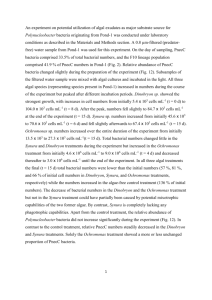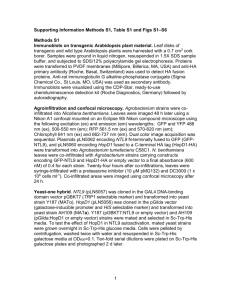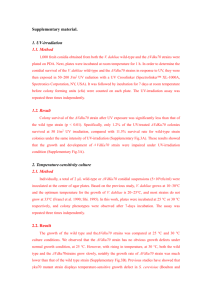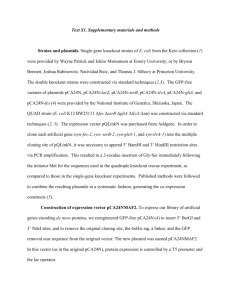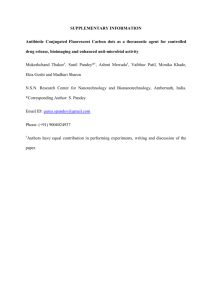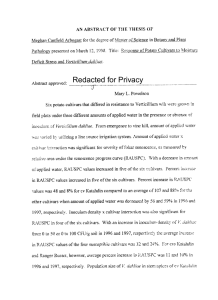tpj12941-sup-0014-MethodsS1
advertisement
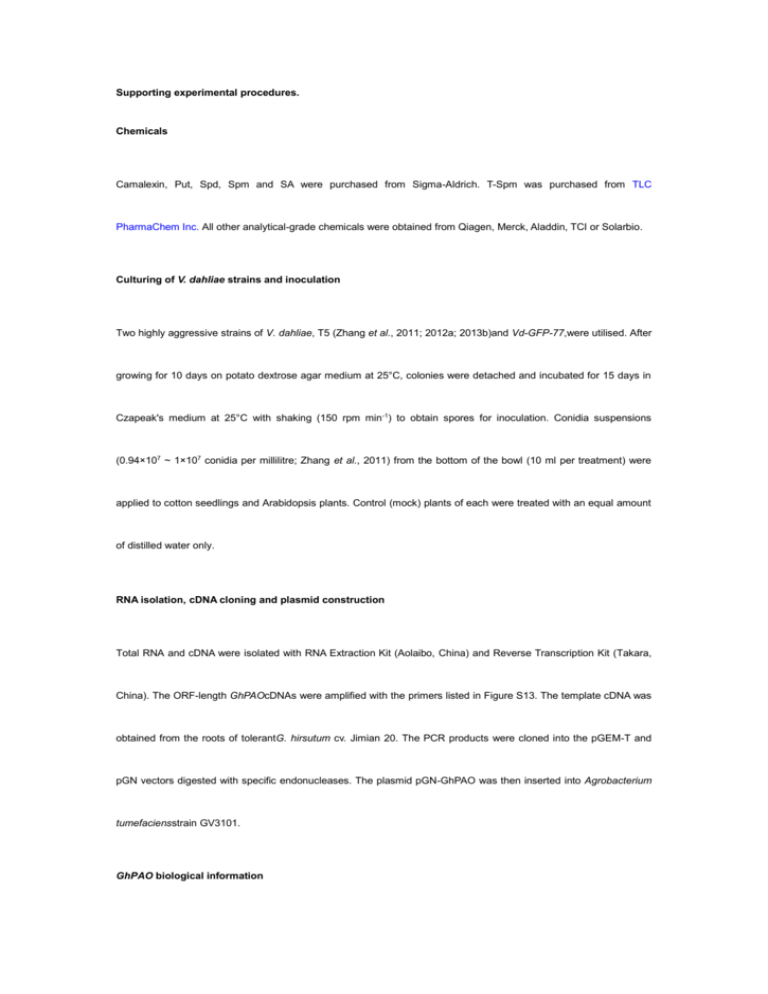
Supporting experimental procedures. Chemicals Camalexin, Put, Spd, Spm and SA were purchased from Sigma-Aldrich. T-Spm was purchased from TLC PharmaChem Inc. All other analytical-grade chemicals were obtained from Qiagen, Merck, Aladdin, TCI or Solarbio. Culturing of V. dahliae strains and inoculation Two highly aggressive strains of V. dahliae, T5 (Zhang et al., 2011; 2012a; 2013b)and Vd-GFP-77,were utilised. After growing for 10 days on potato dextrose agar medium at 25°C, colonies were detached and incubated for 15 days in Czapeak's medium at 25°C with shaking (150 rpm min-1) to obtain spores for inoculation. Conidia suspensions (0.94×107 ~ 1×107 conidia per millilitre; Zhang et al., 2011) from the bottom of the bowl (10 ml per treatment) were applied to cotton seedlings and Arabidopsis plants. Control (mock) plants of each were treated with an equal amount of distilled water only. RNA isolation, cDNA cloning and plasmid construction Total RNA and cDNA were isolated with RNA Extraction Kit (Aolaibo, China) and Reverse Transcription Kit (Takara, China). The ORF-length GhPAOcDNAs were amplified with the primers listed in Figure S13. The template cDNA was obtained from the roots of tolerantG. hirsutum cv. Jimian 20. The PCR products were cloned into the pGEM-T and pGN vectors digested with specific endonucleases. The plasmid pGN-GhPAO was then inserted into Agrobacterium tumefaciensstrain GV3101. GhPAO biological information Conserved domain sequences for GhPAO were analysed online (http://www.ncbi.nlm.nih.gov/). A phylogenetic analysis was performed with the BLAST program and DNAMAN software. The GhPAO promoter sequence was amplified with the primers listed in Figure S13, and the template DNA was obtained from the roots of tolerantG. hirsutum cv. Jimian 20. An analysis of GhPAO promoter cis-acting elements was performed using PLACE(http://www.dna.affrc.go.jp/PLACE/signalup.html) and PlantCARE(http://bioinformatics.psb.ugent.be/webtools/plantcare/html/). Arabidopsis transformation and screening of transgenic plants Binary plasmids carrying the specifiedconstruct (pGN-GhPAO) in Agrobacterium tumefaciens GV3101 were used to transform Arabidopsis ecotype Col-0 with the floral dip method (Clough and Bent, 1998). The transgenic lines were screened on MS medium containing 50 mg L-1kanamycin and further verified by PCR using cDNA and genomic DNA as the templates. Subsequent generations were subjected to further characterisation.Absolute quantification of overexpression levels of the homozygous T4 lines (#13, 18 and 41) were conductedby Real-Time RT-PCR and shown in Figure S5. Three independent and homozygous T4 lines (#13, 18 and 41) were used for all experiments. Measurement of H2O2 content and CAT activity The levels of H2O2 in plant tissues were performed using the spectrophotometric method with anH2O2 assay kit (Nanjing Jiancheng, China) to measure the formation of the complex resulting from the reaction of molybdic acid with H2O2. The increase in A405 was measured using a microplate reader (Model 550; BIO-RAD).The levels of CAT activity were determined using the spectrophotometric method with a CAT assay kit (Nanjing Jiancheng, China). The increase in A470 was measured using a microplate reader (Model 550; BIO-RAD). Real-time RT-PCR analysis Expression patterns of GhPAO and all genes studied in this work were determined by real-time RT-PCR. Total RNA was extracted from the roots of ‘Jimian 20’, ‘Pima 90-53’ and ‘Han 208’ cotton plants and from the leaves of overexpressing transgenic and Col-0 Arabidopsis plants. Three-step Q-PCR was performed using a BIO-RAD CFX96TM Real-Time system (USA).The relative expression level for each target gene was calculated by the cycle threshold (CT) 2–ΔΔCt method (Livak and Schmittgen, 2001).AtUBQ5 (At3g62250) and AtEF-1α (At5g60390) were used as double internal reference genes for Arabidopsis, and GhTub1 (AF484959.1) and GhUBQ7 (DQ116441) were used for cotton.Absolute quantification of GhPAO expression in transgenic lines was performed as described (Nakamura et al., 2007; Shimada et al., 2010). Bioassay for PA and camalexinV. dahliae antifungal activity The bioassay for PA against the plant pathogenic fungus V. dahliae was performed by a dual culture technique in vitro. For the inhibition of conidial proliferation, 50 μl PA (final concentration ranging from 0.1 to 100 μmol ml-1) and 50 μl conidial suspensions (strain of V. dahliae T5, 5×107cfu ml-1) were added to polypropylene centrifuge tubes in a final volume of 1 ml Czapek's solution. The tubes were incubated for 24 h at 25 °C with shaking (150 rpm min -1), an equal volume of water was used instead of PA as a negative (mock) control, and the conidial concentrations were quantified at 0 h and 24 h. Serial pH of fungal media (Czapek's solution, without PA addition) were adjusted, and used to evaluate the effect of pH on the growth of V. dahliae conidial (Figure S9a). The corresponding pH values of different PA solutions are shown in Figure S9b. For the inhibition of hyphal growth, 50 μl PA (final concentration 0.1 μmol ml-1) and 50 μl hyphal homogenate (strain Vd-GFP-77) were assayed as described above for 2 days, the fresh weight of the hyphae was quantified via centrifugation, and the GFP expression in microcolonies was examined with a fluorescence microscope at 24 h. For the inhibition of colony growth, 10 μl conidial suspension (strain V. dahliae T5, 5×107cfu ml-1) was added to the central position of 20 ml potato dextrose agar plates containing PA (final concentration at 0.1 μmol ml-1), and the colony diameters were measured after culture at 25 °C for 5 days and 10 days.Bioassays of camalexin against conidial proliferation of fungi V. dahliae were performed as described above. The final concentrations of camalexinwere 10 nmol ml-1 (pH = 6.57), 50 nmol ml-1 (pH = 6.57), 100 nmol ml-1 (pH = 6.54) and 500 nmol ml-1 (pH = 6.58), and the samples were incubated for 24 h. Measurement of camalexin and SA Camalexin was extracted from leaf tissues and analysed by HPLC with a fluorescence detector set at 305 nm excitation/407 emission(Wang et al., 2012b). SA levels were determined by HPLC with a fluorescence detector set at 305 nm excitation/405 emission, as described previously (Meuwly and Métraux, 1993; Dewdney et al., 2000). Exogenous reagent treatment The plant hormones SA, ET (the ethephon solution was used to instead of ethylene) and MeJA were sprayed onto resistant (Pima 90-53) cotton leaves at 1 μmol ml-1. Spm, SA and H2O2were sprayed onto Col-0 Arabidopsis leaves at 1 μmol ml-1. Water at the same pH was used as a mock treatment. APCHA, inhibitor of SPMS protein, were sprayed onto GhPAO-overexpressing leavesat 1 μmol ml-1. VIGS in cotton followed by pathogen inoculation TRV-based VIGS was used to generate GhPAO-knockdown cotton plants (Gao et al., 2011). Inserts to generate TRV:GhPAOand positive mock TRV:GhCLA1 (cloroplastosalterados 1) were amplified from the cDNA of G. hirsutum cv. Jimian 20. The primer pairs used to generate the TRV vectors are shown in Figure S13. TRV vectors were agro- infiltrated into the cotyledons of 7-day-old seedlings of G. hirsutum cv. ‘Jimian 20’. The leaf-bleaching phenotype in TRV:GhCLA1plants was observed at 7 days after infiltration (Figure S10a). Two weeks after infiltration, the seedlings were inoculated with V. dahliae, and disease symptoms were photographed at 23 d after inoculation. Transcript levels were analysed in three leaves from each of three independent cotton plants of TRV:GhPAO, and a 98% reduction in GhPAO expression was observed in the silenced plants compared with the empty vector plants (Figure S10b). Plant disease index (DI) is calculated as the following formula: DI = 100×[Σ(n×the number of seedlings at level n)]/(4×the number of total seedlings), n denotes disease level, cotton seedlings were divided into 5 levels based on their disease severity after V. dahliae inoculation (level 0, 1, 2, 3, 4), DI reflects the disease infection status of a population, not an individual plant; higher DI means more serious infection (Xu et al., 2012; Gao et al., 2013). References: Clough, S.J. and Bent, A.F. (1998) Floral dip: a simplified method for Agrobacterium-mediated transformation of Arabidopsis thaliana. Plant J. 16, 735–743. Dewdney, J., Reuber, T.L., Wildermuth, M.C., Devoto, A., Cui, J., Stutius, L.M., Drummond, E.P. and Ausubel, F.M. (2000) Three unique mutants of Arabidopsis identify eds loci required for limiting growth of a biotrophic fungal pathogen. Plant J. 24, 205–218. Gao, X., Wheeler, T., Li, Z., Kenerley, C.M., He, P. and Shan, L. (2011) Silencing GhNDR1 and GhMKK2 compromises cotton resistance to Verticillium wilt. Plant J. 66, 293–305. Gao, W., Long, L., Zhu, L.F., Xu, L., Gao, W.H., Sun, L.Q., Liu, L.L. and Zhang, X.L. (2013) Proteomic and virus-induced gene silencing (VIGS) Analyses reveal that gossypol, brassinosteroids, and jasmonic acid contribute to the resistance of cotton to Verticillium dahliae. Mol. Cell Proteomics, 12, 3690–3703. Livak, K.J. and Schmittgen, T.D. (2001) Analysis of relative gene expression data using real-time quantitative PCR and the 2(_Delta Delta C(T)) method. Methods, 25, 402–408. Meuwly, P. and M_etraux, J.P. (1993) Ortho-anisic acid as internal standard for the simultaneous quantitation of salicylic acid and its putative biosythetic precursors in cucumber leaves. Anal. Biochem. 214, 500–505. Nakamura, H., Dan, S., Akashi, T., Unno, M. and Yamori, T. (2007) Absolute quantification of four isoforms of the class I phosphoinositide-3-kinase catalytic subunit by real-time RT-PCR. Biol. Pharm. Bull. 30, 1181–1184. Shimada, H., Obayashi, T., Takahashi, N., Matsui, M. and Sakamoto, A. (2010) Normalization using ploidy and genomic DNA copy number allows absolute quantification of transcripts, proteins and metabolites in cells. Plant Methods, 6, 29. Xu, F., Yang, L., Zhang, J., Guo, X., Zhang, X. and Li, G. (2012) Prevalence of the defoliating pathotype of Verticillium dahliae on cotton in central china and virulence on selected cotton cultivars. J. Phytopathol. 160, 369–376.
